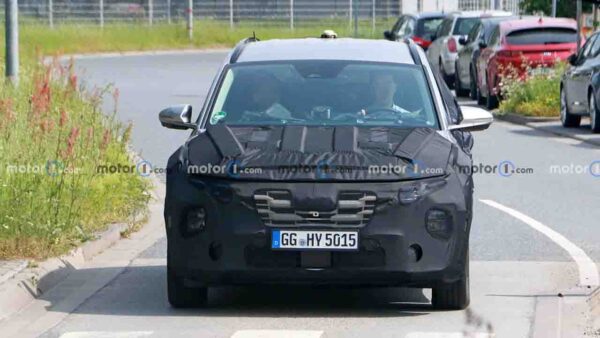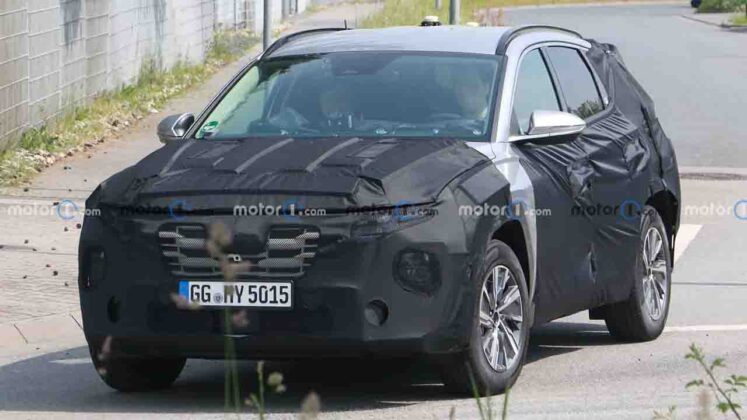
Except for the front grille and alloy wheels, recently spotted Hyundai Tucson facelift doesn’t feature any significant features
Hyundai is facelifting its Tucson SUV globally. There are sightings of multiple test mules in South Korea and not every Tucson test mule bears similar design. It is highly possible that there will be two different versions of Tucson for different markets. One is just a slight iterative update to current Tucson, while the other is a complete departure.
For the first time, Tucson is under testing in Europe. There are very minimal changes and this is likely to be for North American and European markets, while other international markets get Palisade-inspired design language. Let’s take a look.
Hyundai Tucson Facelift Spotted Testing
The South Korean manufacturer is known to break design heritages quite often. For example, India-spec Creta facelift features a Palisade-inspired design, while Indonesia-spec Creta features a Tucson-inspired design. Both of these variations break Hyundai’s tradition of offering Santa Fe inspired designs to Creta at their respective times.
Sticking with Hyundai Tucson facelift, European and North American versions vastly stay true to the current model. Apart from the new parametric grille with smaller studs, there are not many visible changes. Headlights are still the same vertically-stacked units. Bumper features a new design that now gets front parking sensors further down than before.

Bonnet could feature some changes, but Hyundai is using foam pads to distort camouflage and conceal any design changes. Except for the new alloy wheels, the side profile is completely identical. Speaking of new wheels, these are five-spoke units. Thinner towards the hub and broaden as they go towards the outer rim.
At the rear, there is a possibility of a new tailgate with Hyundai Tucson facelift. Hyundai has bothered to fortify the rear with extra foam and heavy camouflage. So, main changes are likely to be here. There is a possibility of a seven-seater version of Tucson. But proportions still look similar to the current five-seater version.
Will this version launch in India?
Connected tail lights and dual-tip exhaust is similar to the current model too. In India, Hyundai launched the Tucson last year and we don’t expect an update so soon in its life cycle. Also, the Palisade-inspired Tucson facelift is more probable to arrive at our shores. In global markets, Hyundai offers a NA 2.5L petrol (187 bhp, 241 Nm) and a 1.6L turbo petrol (226 bhp, 350 Nm) options.

There is a PHEV version as well, which ekes out 261 bhp of power. Tucson N Line variants get the same 2.5L petrol engine, but turbocharged to kick out around 290 bhp of power. In India, Tucson offers a choice between a 2.0L petrol (155 bhp, 192 Nm) and a 2.0L diesel (185 bhp, 416 Nm). Hyundai offered diesel versions with AWD as well.
Notable features include soft-touch plastics, a touchscreen infotainment system, a powered driver’s seat, multi zone climate control, a panoramic sunroof, rear AC vents, ADAS suite and more.



